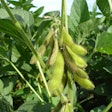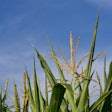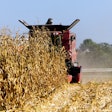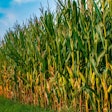
The Kansas Wheat Commission sounded the alarm on the significant threat from wheat streak mosaic virus (WSMV), with experts warning this could be the worst outbreak since 2017. The disease, carried by wheat curl mites, is causing concern across the state as symptoms become more visible with warming temperatures.
Kelsey Andersen Onofre, K-State assistant professor of plant pathology, reports that some fields are close to total losses. "It's hard to walk in a wheat field in Kansas right now and not find at least low-level, trace-level symptoms of WSMV, and that's pretty unusual," Andersen Onofre said.
The widespread infection is attributed to high mite populations last summer, which found refuge in volunteer wheat and cover crops. Mild weather conditions allowed mite populations to remain high and disperse over long distances, up to one or two miles from their source.
Justin Knopf, a farmer from Gypsum in Saline County, is experiencing the impact firsthand. "This is by far the worst year I've seen for impact of wheat streak mosaic virus in our area," Knopf said. "Many fields have been affected with a high level of presence of the virus. Some fields, where they're right next to a field where the source was, have significant impact."
Infected fields near the flowering stage often show poor head development or low grain fill, leading to expected yield losses. Knopf predicts that WSMV is likely to be the number one cause of yield loss in his area this season.
Adding to producers' challenges, there is no effective treatment for WSMV once infection has occurred. Andersen Onofre advises against fungicide applications, as they have no effect on wheat streak. She also discourages the use of insecticides or miticides, stating, "There is no immediate action you can take to slow down the spread of WSMV or preserve yield in affected fields."
Producers who selected wheat varieties with known tolerance or genetic resistance to WSMV are seeing the benefits of their decision. However, Andersen Onofre cautions that even resistant varieties may be susceptible to Triticum mosaic virus (TriMV), and dual infections can lead to more severe yield losses.
Looking ahead, experts emphasize the importance of aggressive volunteer wheat management after harvest and careful variety selection for fall planting to mitigate future outbreaks. Producers are encouraged to work with local extension offices or send samples to the K-State Plant Disease Diagnostic Clinic for virus testing.
Upcoming winter wheat variety plot tours, starting May 13, will provide producers with opportunities to observe how different wheat varieties are reacting to this season's disease pressure. These field observations will be crucial as the industry works collectively to prevent future WSMV outbreaks.


















